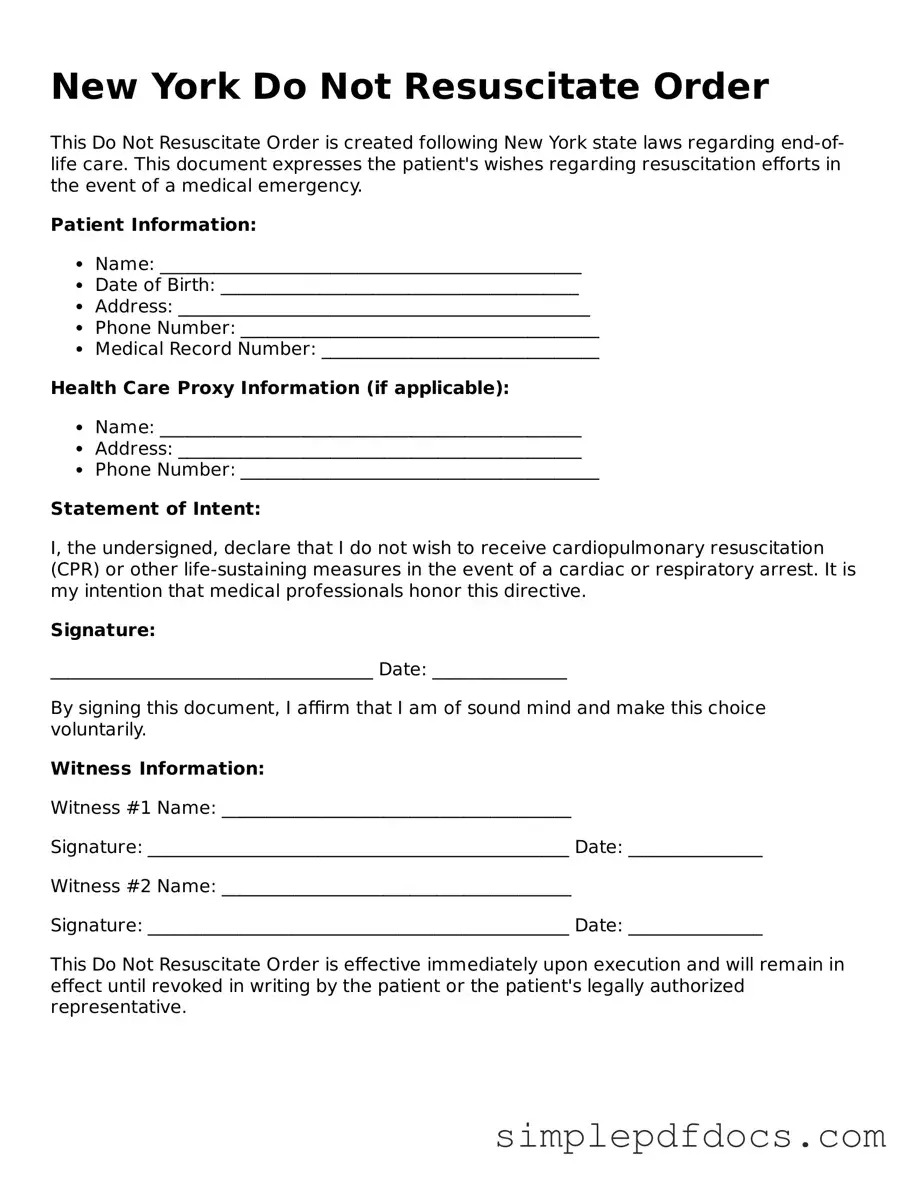Legal Do Not Resuscitate Order Document for the State of New York
A New York Do Not Resuscitate Order (DNR) form is a legal document that allows individuals to express their wishes regarding resuscitation efforts in the event of a medical emergency. This form ensures that patients can maintain control over their medical treatment, especially in situations where they may not be able to communicate their preferences. Understanding the implications of a DNR order is essential for both patients and healthcare providers, as it facilitates informed decision-making and respects personal choices.
Get Document Here
